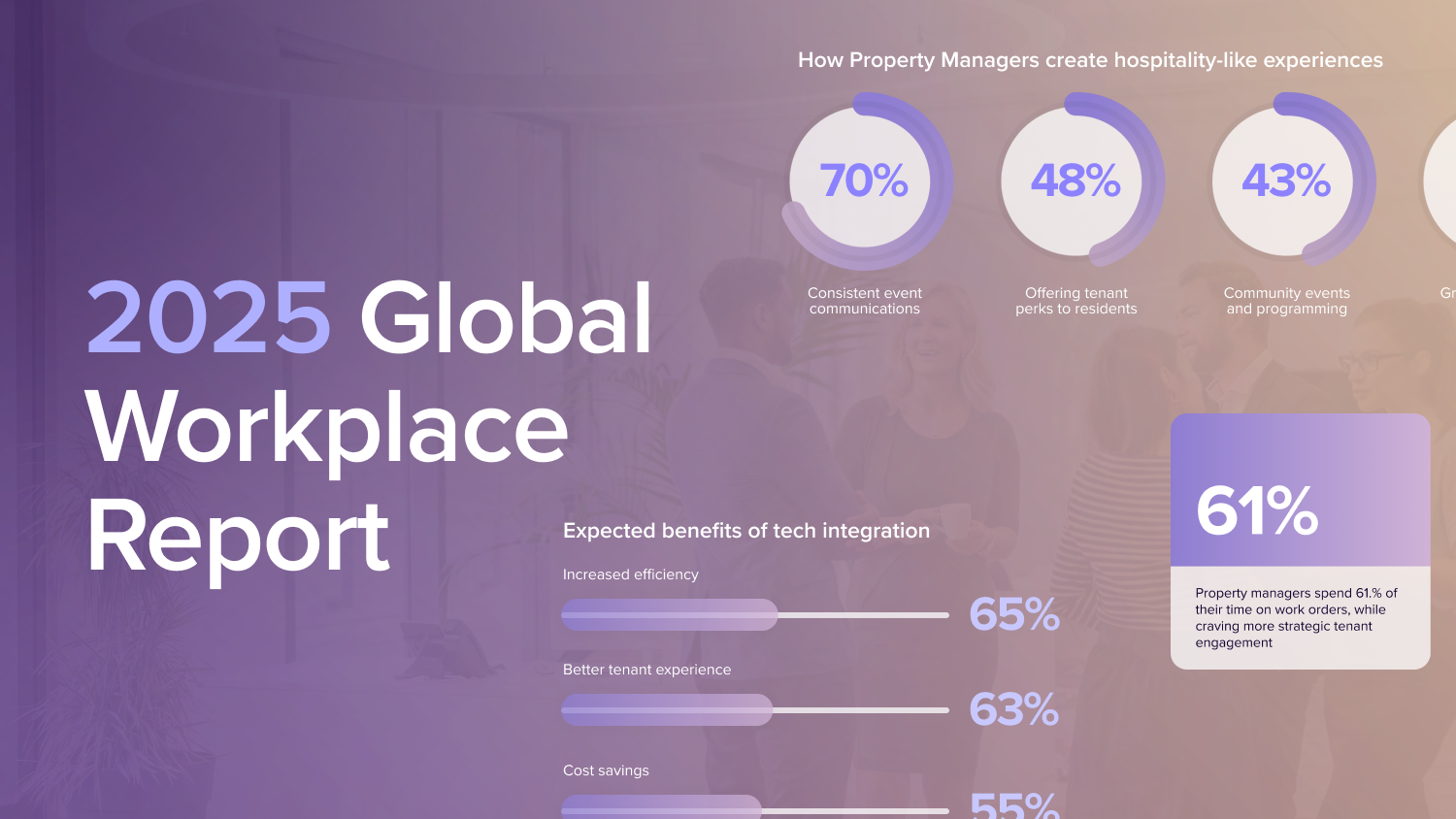It’s no secret that workspaces have undergone a fundamental shift over the past few years when it comes to how and when employees show up for work. Both employers and employees have come to appreciate the comfort and freedom that come when you cut the cord to the standard desk and blur the lines in the nine-to-five, five-days-a-week work schedule.
Let’s explore what workplace flexibility looks like, and how it can benefit both workers and the companies they work for.
What is flexibility in the workplace?
Workplace flexibility is any policy that allows employees greater freedom and control over how they work, when they work, and where they work. Most companies shift their operations toward more employee flexibility in the workplace by gradually implementing new policies and practices, often on a trial basis. Progressive companies may include multiple agile working policies, while traditional businesses might offer employees more limited options.
A brief history of workplace flexibility
The rise of coworking spaces in the early 2000s provided startups and freelancers with shared rentable office spaces catering to a wide variety of working needs and styles. The following decade saw teleworking products come to the market, allowing employees to work from home and commute less.
While these innovations started the conversation around workplace flexibility, talk quickly had to turn into action in 2020 to allow businesses to keep functioning during the pandemic. This necessary shift was a catalyst for corporate culture to begin to more fully embrace flexibility in the workplace. Today, leading companies are looking to add flexible workplace policies to attract new talent and draw employees back into the office.
Types of workplace flexibility
Flexible schedules
Traditionally seen as a perk reserved only for C-suite leadership, flexible work schedules are now trickling down into all levels of company culture. These schedules allow workers the ability to be in (or out) of the office outside of the traditional nine-to-five workday, provided that they fulfill their work responsibilities and meet deadlines.
Remote working and telecommuting
Like flexible schedules, remote work and telecommuting allow employees more leeway in their working hours and location. Some companies have prescribed hybrid work schedules for employees, such as having them in the office four days a week and working from home one day a week, while others give employees more freedom to structure their own schedules for a better work-life balance.
Compressed work weeks
In recent years, businesses have started experimenting with four-day workweeks and abbreviated workdays, and shifting to a results-only work environment (ROWE) which maintains the same compensation and productivity expectations as a standard five-day week or eight-hour day. Trials have shown that an abbreviated work schedule can increase employee satisfaction without decreasing productivity, and 91% of companies who participated in a recent trial in the UK decided to permanently adopt a compressed workweek.
Job sharing and part-time employment
Job sharing is when two employees do one job, usually by working complementary part-time schedules. For example, one employee may work mornings, while the other works afternoons, or they may trade off days of the week. Compensation is split evenly between the two, and it allows both employees more flexibility with their schedules.
Workplace design
In flexible workspaces, cubicles and conference rooms are falling out of fashion, being replaced by thoughtfully designed, activity-based working spaces. Many offices now have fewer assigned desks and more designated areas for specific work, like large tables for project collaboration, quiet spaces for focused work, and comfortable seating for networking and brainstorming sessions. Alternative furniture–like ergonomic desk chairs and standing desks– can also add to workspace flexibility.
Benefits of Flexible Work Arrangements
Businesses are increasingly finding that flexible work arrangements have a wide variety of benefits to employees and the company as a whole. Benefits of flexible workspaces and cultures include, but are not limited to:
- Cost savings- Telecommuting leads to lower transportation costs for employees and fewer people in the office, which allows for smaller office spaces and lower overhead and equipment costs.
- Improved physical health- More flextime outside of the office reduces stress levels and exposure to germs, leading to healthier employees and fewer sick days.
- Increased productivity- Allowing workers to work during their most productive times of day in their most productive environments boosts productivity across the board and can increase company profits.
- Better mental/emotional health- Like physical health, employees who feel good are more productive and miss less work.
- Talent attraction and retention- When employees feel valued and supported by being given more job autonomy and control, they are more likely to want to stay put.
- Positive company culture and networking- Having work-defined spaces and amenities where individuals from different departments can interact leads to a more integrated, less compartmentalized company culture.
Flexibility and coworking spaces
Coworking spaces have not only been a significant factor in the rise of workplace flexibility, they continue to play a role, both as tool for greater agility and as a space to workshop company flexibility policies.
Temporary remote offices
Even if your company has a home base, a coworking space can offer strategic benefits as a temporary remote collaboration office for project teams working in target markets. Short lease terms and fully furnished offices with included maintenance and janitorial services create a turnkey experience so your team can hit the ground running.
Workspace flexibility labs
Most coworking spaces have 24-hour access and open floor plans to allow for a variety of workspace configurations and cultural innovation. When you combine these factors with the flexible lease terms offered by these spaces, it makes them ideal temporary test labs for select groups of workers to do trial runs of workspace flexibility policies like work-defined spaces and nontraditional work schedules.
Factors to consider when implementing flexible work arrangements
Flexible workplaces are not one-size-fits-all. When considering which will work best for your company, consider the following questions:
- What do our employee retention rates tell us about the potential need for more flexible workspaces and policies?
- How satisfied are our current employees with the degree of flexibility they enjoy in their jobs?
- How do alternative work arrangements align with our company culture and values, and how might implementing them affect our culture and values?
- Which positions in our company might benefit most from a more flexible workplace, and which workplace flexibility factors might provide the most benefit to those positions?
- Which types of workplace flexibility would provide the greatest return on investment of time and money?
How to promote flexibility in the workplace
Implementing workplace flexibility will be a welcome change for some people, but it might be a challenging transition to others. Use these tips to help make the adjustment easier for everyone involved.
Communicate, communicate, communicate
Communication starts well in advance of any policy changes. Don’t assume you know what workers want: use surveys, focus groups, and other forms of communication to gather data and feedback that will ensure that your workspace flexibility plan strikes the right balance. Then, be clear about any changes that may be coming.
Start small
Phased introductions of workplace flexibility policies will allow you to assess a new policy’s effectiveness on employee satisfaction and productivity, and it will help you identify any potential hiccups in the plan before moving forward with company-wide implementation. Consider starting with a small test group, or a trial period. See what sticks, and make adjustments if needed.
Track results
If you’re accountable to a board of directors or other stakeholders, it’s important to identify key performance indicators that can measure the effects–positive or negative– of flexible workplace policies. Identify KPIs like survey results, company health expenses, equipment costs, revenue, and other trackable data that can indicate how a workplace flexibility policy is impacting both the company’s culture and its bottom line.
Be willing to change course
Again, workplace flexibility is not a one-size-fits-all proposition. You may discover that a policy that worked great for the company next door just isn’t a good fit for your employees, and it’s important to be willing to pivot when that happens. Flexibility in the workplace examples can be as diverse and innovative as the companies that implement them, so don’t be afraid to think outside of the box and keep trying new things.
So, what's next?
When it comes to supporting flexible work strategies, your business needs to invest in technology that adapts as you do. Whether you're implementing remote work, hybrid scheduling, or simply elevating the in-office experience, technology is what is going to make it possible. No matter where they work, it's essential for you to keep tenants and their talent connected to their workspace.
Employing a robust tenant experience solution gives your business access to tools that support flexible work, no matter what it looks like.





